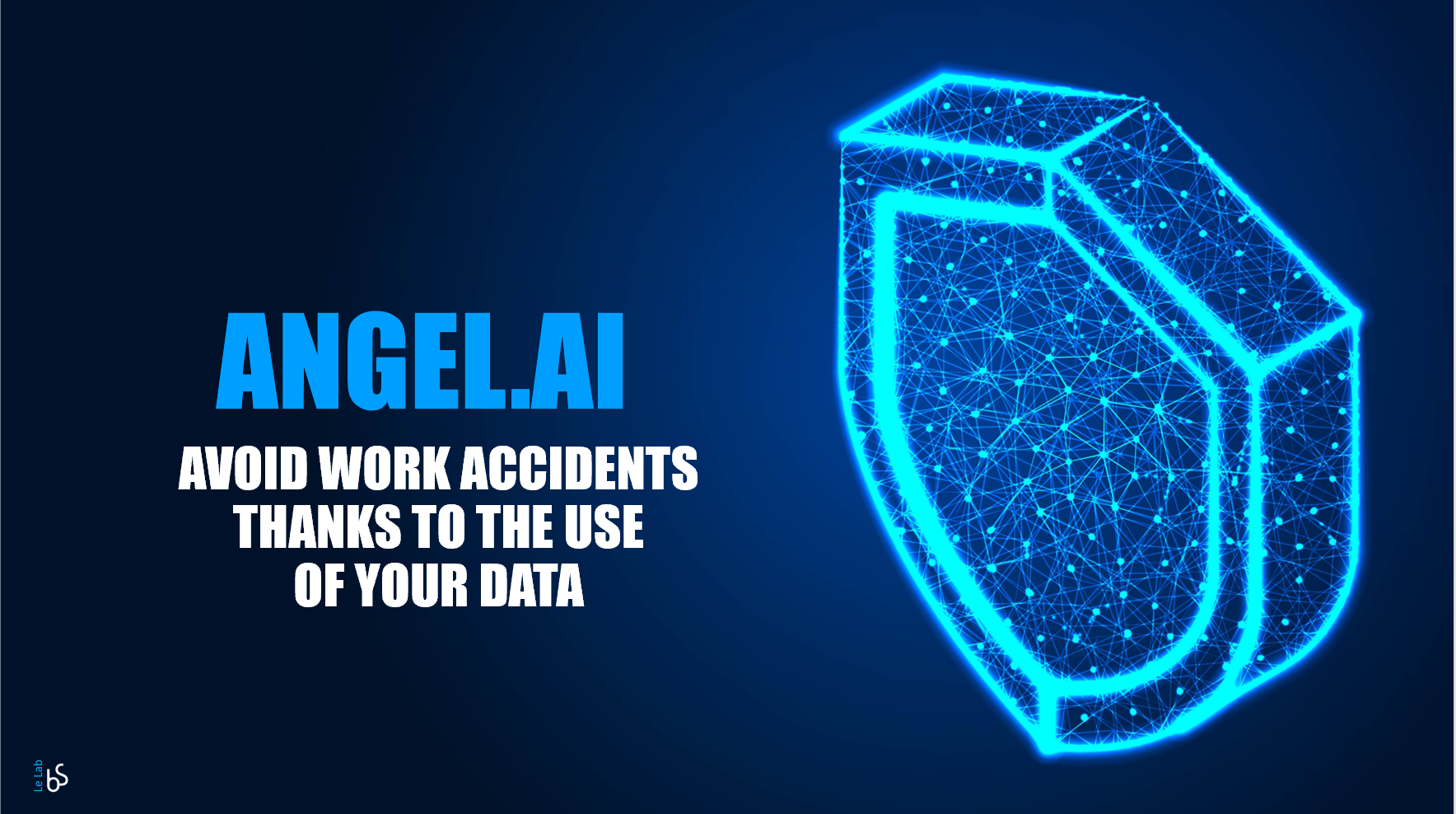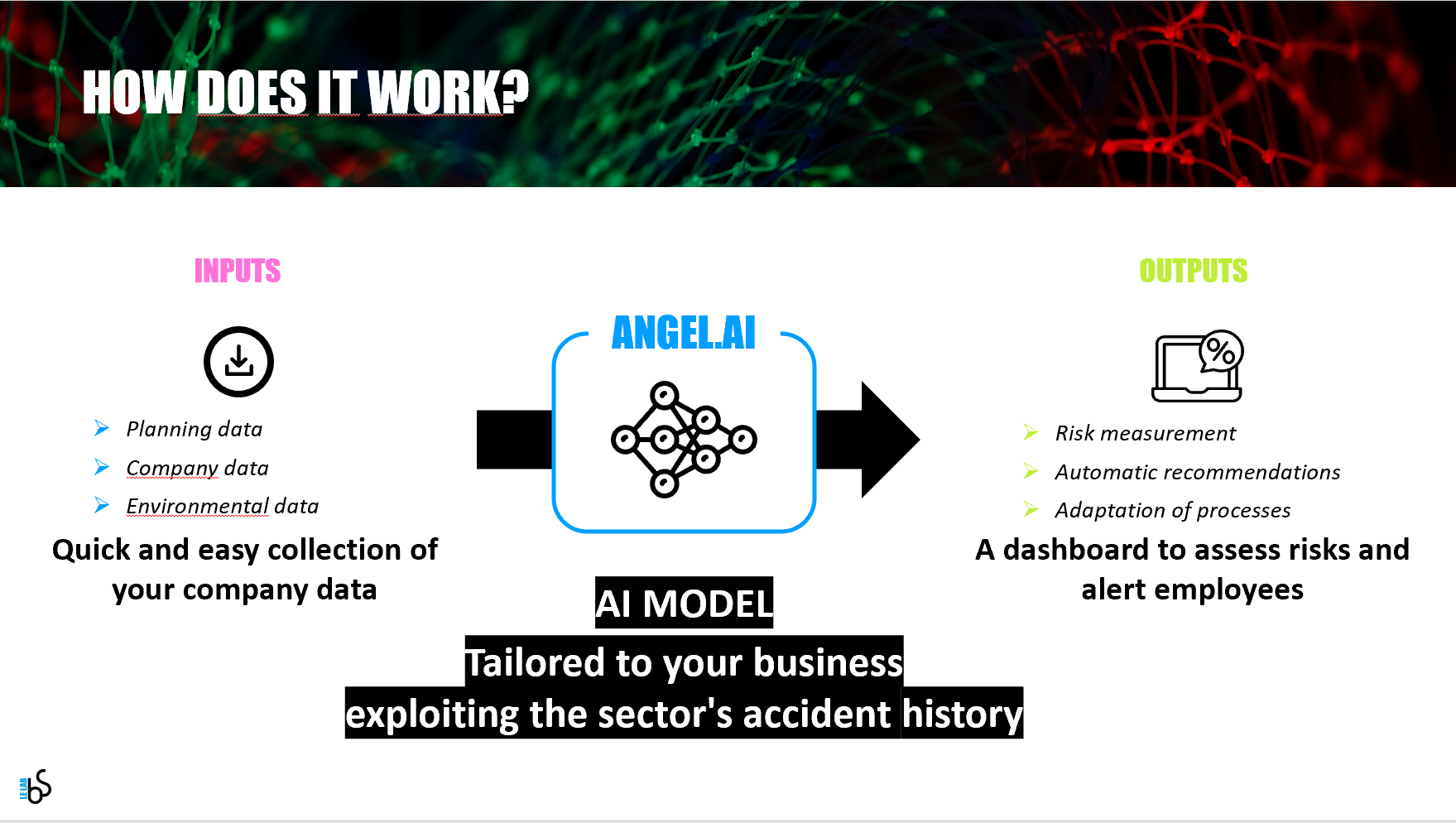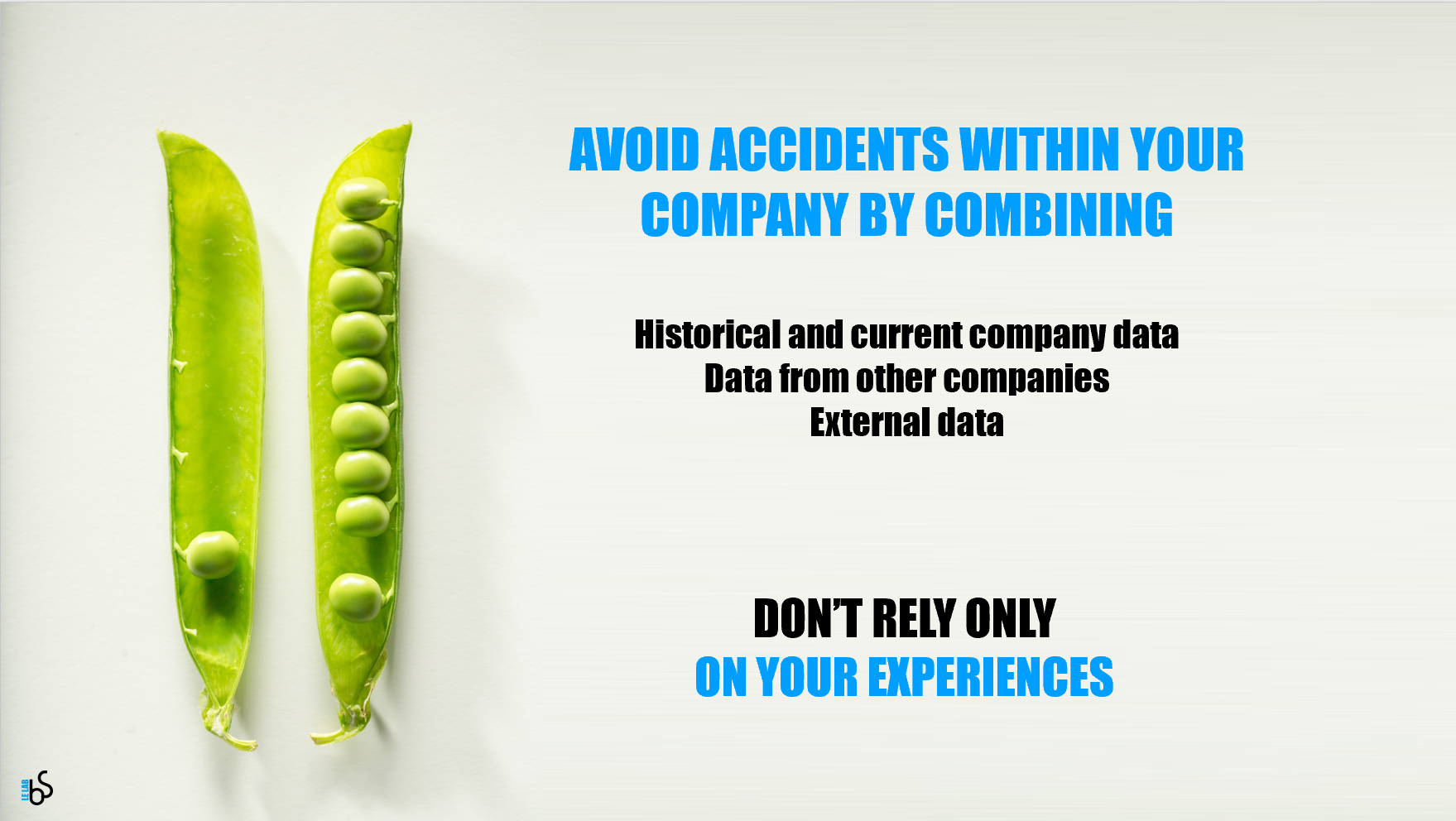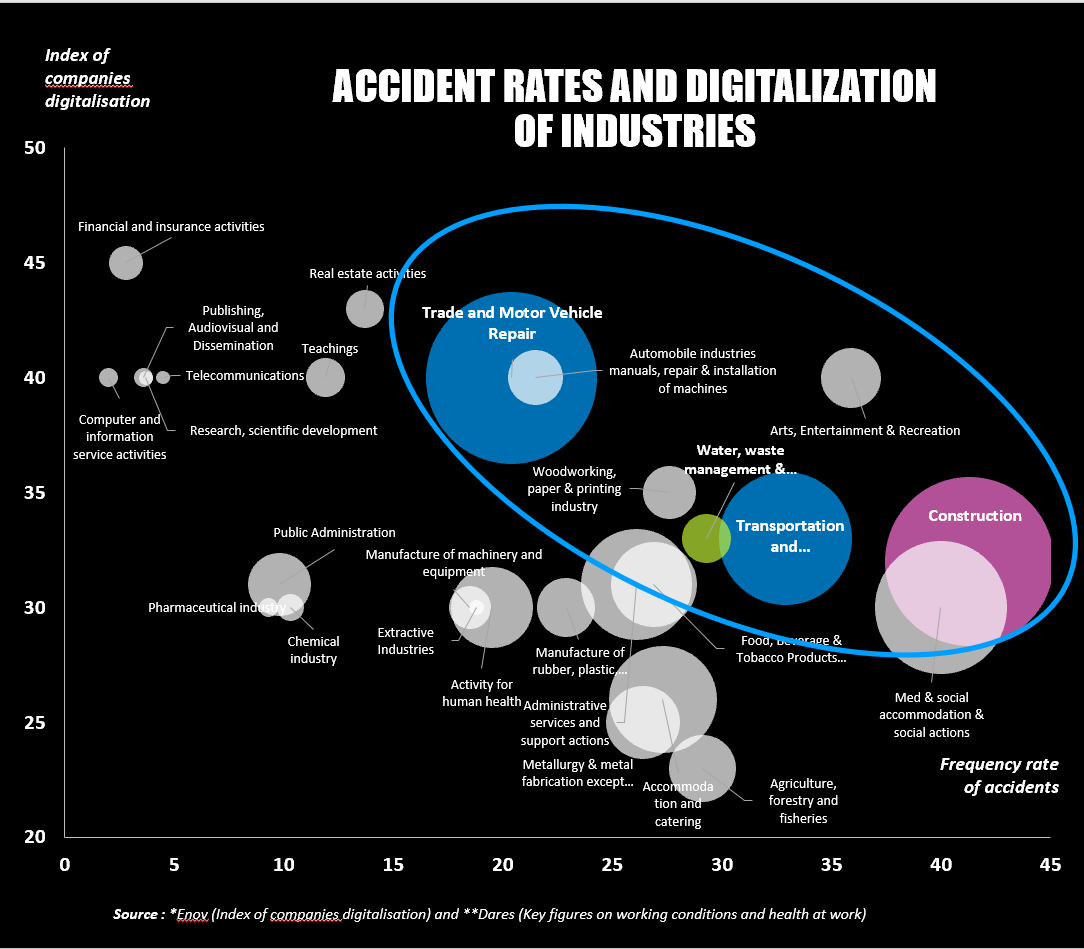5.2 ANGEL.AI : Improving employee safety by identifying weak signals through the evaluation of activity and environmental data

Current solutions are inadequate
Occupational accidents and psychosocial risks are multifactorial: they result from a set of circumstances that can lead to dramatic situations. Faced with this challenge, solutions have been developed to reduce the risks, in particular through the implementation of preventive measures. However, these measures are the result of a systematic analysis of past events, from which general lessons have been drawn, which have been transformed into procedures that are destined to apply to everyone without taking into account individual specificities.
With regard to the prevention of psycho-social risks, most of the prevention actions currently undertaken are mainly aimed at measuring well-being at work. The surveys or questionnaires set up make it possible to identify the work as it is perceived by employees at a given time. These surveys are not representative of the employee’s psychosocial development and therefore do not constitute a measure to prevent psychosocial disorders.
AI works through the exploitation of the company’s available data
Our solution differs from existing solutions by exploiting the data already available in the company.
To function, the system collects a maximum of data from the company: operational or personal data and even financial data. Environmental data, such as weather, traffic, brightness, news feeds can be connected to the systems according to usage cases in order to add relevant data to the data catalogues. The objective is to collect as much information as possible in order to identify in the ocean of data generated every day by the company, weak signals that are precursors of accidents.
These data are analysed by an artificial intelligence model, which makes it possible to estimate the risk of accidents. Depending on the types of accidents and situations, corrective actions are recommended to reduce the identified risks. This enables the safety processes to be adapted very precisely to the situations encountered. If necessary, employees are informed of the identified risks and can adapt their behavior accordingly.
The AI model specific to each company is created from an analysis of its accident history and data. The algorithm will look for correlations between the available data and the occurrence of accidents. The ability to detect accidents will be directly related to the amount of data to be analyzed.

Data sharing to improve the quality of the model
In order to improve the performance of the model in cases where the amount of historical data is too small, it is possible to exploit the accident history of several companies. This makes it possible to exploit the feedback from an industrial sector for the benefit of the safety of its employees.
This method allows each company to keep control of its data. Its data are, for a limited time, made available to the algorithm in charge of creating the AI model. Once the learning phase has been completed, it is the AI model that is shared and not the company’s confidential data.
The main determinant of the quality of AI models is the amount of data analyzed. This solution maximizes the relevance of AI models while ensuring the protection of confidential data.

AI respects a legal framework concerning the use of personal data
The main obstacle to the deployment of this new risk prevention approach is not a technical one. Data collection and analysis technologies are now mature. In the mass of data to be analysed by the detection algorithm, some of the data will be personal data. This data will have been generated in a professional context, but will be attached to an identified individual. They will then have to be treated with care in order to respect the law and ethical principles.
The collection and processing of personal data is a sensitive subject. Many organisations refuse, as a matter of principle, any initiative to use personal data for any purpose. We believe it is essential to analyse the benefits and risks of data security management to ensure that the real interests of employees are taken into account.
The use of personal data is not prohibited, but it must be done within a legal framework and respect two fundamental principles:
- First, such use must be legitimate and proportionate. As long as the analysis is limited to the identification of accident precursor signals and ignores all other elements, this use appears legitimate and proportionate.
- Second, the individuals whose personal data are analysed must be informed of the analyses carried out and of the use that will be made of the results.
What are the sectors that most need ANGEL.AI?
In order to identify the most promising sectors for the application of this new risk prevention method, it is necessary to identify the highly digitised industries which are the source of a significant number of accidents at work.
Today, not all industrial sectors are mature enough to implement this new way of preventing accidents at work. Some industries are still very poorly digitised. The amount of data generated by operational staff is therefore very limited. It then becomes difficult to identify weak accident precursor signals if the amount of data available for analysis is too small.
As already mentioned, the digitalisation of all economic sectors is underway. Therefore it is very likely that it will soon be possible to generalise these analyses to all companies.
The construction sector appears to be a good field of application for this new technology. The accident frequency rate is high and the digitalisation of the sector is in progress.
Retail, transport and warehousing sectors are also good candidates for the deployment of these new risk prevention methods.
